Ever since I was a little girl I always loved to play dress ups, and that has not changed in adult life. To be someone or something else from a bygone era just for a day is loads of fun. Leaving behind your everyday life and stepping into a different era (or portraying a person) from that time just for an occasion, can be very gratifying, as it makes you think or behave differently according to what you are wearing. Playing a role from a time which is new to you, may make you act or speak in a way that you normally wouldn’t – making the whole transition more authentic to those around you. We choose to embrace the era in which these roles are played and what better way to do that than by wearing a costume depicting that time – a time we never experienced ourselves, but only our Parents or Grandparents did. The styles, the colours, the trims and accessories that went with such costumes are as fascinating as the characters they portray.

What it means to dress up in Costume
Dressing up is not just child’s play anymore, even though children have traditionally used costumes as a way to emulate grown-ups, be creative or encourage imagination through costumes. Playing dress-ups is a universal and timeless activity that allows people of all ages to explore creativity, self expression, and personal style. Whether it’s trying on different outfits, experimenting with accessories, or adopting a specific theme or era, playing dress-ups can be a fun and lighthearted way to engage with fashion.
The psychology of dressing up means to “switch roles” but can also be a temporary escapism through fashion. Dressing up in vintage or historical clothing can be an educational experience, providing insights into fashion history and cultural trends from various eras. Costumes have always been a big part of traditions or celebrations amongst cultures, here we explain their significance.
Ancient Times
Costumes have been part of human fashion for thousands of years and were originally used for distinguishing between social classes or to ward off evil spirits. They generally were worn to elaborate events, however they also had a strong influence on popular culture and everyday wear. The Ancient Egyptians wore costumes in their Ancient Theaters and the Pagans used theirs in Religious Traditions which are still continued today in Europe and America. In ancient times costumes have always played an important role in society and human culture. Even during the very early stages of society when natural elements were used, people still expressed themselves wearing these for art, religion or social status. Costumes distinguish the different races of humans while telling a story.

Since early Ancient times, costumes have been a very important aspect of live theater. Actors in many historical productions around the world would often wear masks depicting emotions. While religious ceremonies were held wearing anything from (African) masks to (Popes) vestments, religious costumes were strongly symbolic denoting power or authority. Costumes were used for thousands of years to identify different levels of social status, and in ancient cultures they used different textiles to denote the different classes like costumes made of Linen for lower class (Commoners) or Silk for higher class (Noblemen). However when society evolved, accessories started to play a larger role.


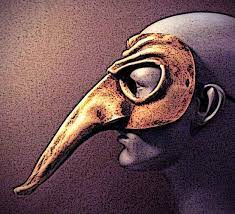
All ancient Egyptians used costumes as a way to practice self expression. Their costumes were particularly visual and distinguished between the social classes as noblemen, middle class or peasants. The upper class Egyptians would accessorise their costumes with elaborate gold jewellery and wigs also were a popular choice for costume accessory. They would bead the wigs and costumes as a sign of authority. Most Egyptian costumes were predominately off white due to their affordability, and only the upper class wore dyed colours as a sign of wealth. However Egyptian priests only wore pure white, as a symbol of sacred purity. Kohl makeup was introduced to defect the heavy glare of the sun, and was worn around the eyes by all classes. Hence the beginnings of Kohl makeup which widely used by women today in modern society – learn more about kohl makeup here.


Togas and Tunics
The Romans and Greeks both men and women, predominately wore Togas. Toga party costumes are still popular today, and a modern version of the Toga can be purchased online at Etsy. The Toga was made from 18 feet of woolen fabric and was worn draped but hanging over the left shoulder. It further was drawn around the body and intertwined around opposite arm and shoulders then draped over the left arm at the wrist hanging with plaits on the ends. It’s form was from a long double circle with two semi circles of different sizes, where corners, fastenings or seams could not be visible.
The Togas were tied with a Sinus, a large overfold in the Toga. For religious purposes or inclement weather the drapes in the back of the Toga were used as a hood or veil. During battles, the women enlisted their slaves to weave and construct garments for them in wool, linen and silk. Different colours were depicted for different classes of society. However when society changed and became more easygoing the Toga was soon discarded by all classes of women and even men, tired of it’s weight and complicated arrangement, but it still remained the costume of state for upper class and Emperors till the end of the Roman times.

Women later favoured the Pallium which was a Greek dress made from (a rectangular shape), while men often would wear a Tunica or Tunic under the Toga which was (a short sleeve shirt like made of 2 pieces sewn together at the sides) and later with a mid thigh skirt made of wool fabric for the colder weather. Other costumes worn by the Roman men included the Galium worn over the Tunic while the Greeks wore the Chlamys, clasped over the right shoulder and fastened on chest with fibulae, cords or rings. The Stola was a full length female version of the Tunic fastened at the shoulder with pins. To buy a similar Stola, you can peruse them here – online. The lower back section could be flounced to match the length of the sleeves. Inside they wore a tunic or vest made of linen.

Another costume was the Palla, a long draped scalf covering their whole body displayed in a certain way using the folds of the garment. Vestal Virgins wore a white Palla with a thick headpiece around their forehead. The upper class wore white or natural wool and later silk, while poorer classes and slaves were prohibited from wearing white so they had to dye them in different colours. Black was for mourning and purple was only for Generals at huge victories. Variations of purple and white stripes were also used by Knights from the shoulder down were called Tribea. Other versions of these colour were worn by Priests and Magistrates.



Romans and Greeks loved to entertain in Theaters and would often don masks worn to portray comical or tragic characters. Religious festivals were celebrated by watching plays in theaters. These plays became very popular and playwrights would compete against each other to be voted the best playwright of the year. The perception that they would be seen as being very successful and having won a competition.They first portrayed tragedies based on tales of Greek heroes, gods and the myths of their day. Eventually they formed comical plays which were often satirical and based on the revelry of Dionysus, thus referred to as Satyr plays, the symbol being half man/half goat.

Medieval and Renaissance
Moving along to the Middle Ages, costumes and theatre productions had a significant impact on society during these times depicting religious themes or subjects directly pulled from passages in the Bible. They were known as liturgical drama which was part of early christian worship performed in churches.
Miracle, Mystery and Morality were the 3 plays held during these times – which had 4 to 5 scenes, but each was performed in different towns or public squares using simple stages and props. For the first play they dressed as monks or priests using their actual clothing or church vestments, but church garments were used for the second play depicting the life of a saints or church figure, and in the third was how to live by virtue of the church. Medieval costumes were worn to personify virtue or evil characters in plays that portrayed priests, angels, martyrs, biblical figures and supernatural beings. The importance of these costumes was to provide information about the story, the character they represented and the social status of the actor, capturing the interest of the audience. The costumes were a hit amongst the townsfolk over and above anything else and were an essential part of the theatre production including the characters they portrayed.


Post Medieval times saw a type of “modern” transition from the Middle ages including the Renaissance period which (started in the 14th Century) extending throughout Europe, bringing much social and cultural changes. As new continents were discovered this brought about the expansion of trade and increased wealth. Developments occured in arts, music, science and technology which grew throughout Europe influencing designs in their fashion and jewellery as they traded with different styles across the continents. Theater productions increased through acceptance in society within the Renaissance period, and the garments chosen depended on the character or story they portrayed. The fabrics used by the rich for the their ministerial garments were silk or brocade with gold thread and floral detail, while simple robes were used for monks and priests in their plays. Fabrics soon expanded to include wool, linen, velvet and fur as English and French merchants brought with them exotic fabrics in silk and velvet from Italy, Spain, the far East and the Turks.

The English were known for their various grades of wool and the expensive dyes they used such as Kermes derived from crushed insects. Actors used leather and ribbon as accessories for better costume fitting. The role of the character and the social status of the actor determined how elaborate the costumes were and this also included Kings, Queens and other royal family who participated in drama productions and hence wore blue, purple or cloths of gold with elaborate embroidery to identify them on stage. Players in English Renaissance theatre were inspired by contemporary religious art and slowly replaced biblical characters such as Daniel, Herod, various devils and the Virgin Mary. The medieval renaissance costumes depicting angels were elegant church robes with attached wings and a gilded gold leaf mask that would glisten and delight the audience. Demonic masks were coloured with Rubia root or grana from insects to achieve the vibrant red colour, or depicted to look like birds or prey or grotesque monsters. A mask maker went to great lengths to achieve the right look for these masks by dying them in natural materials such as roots, bark, herbs, vegetables or flowers.

Embellishments Grandeur and Ballet
Embellished costumes and accessories became more grand in time but still considered most important, however props and stage fittings were vastly improved as people became involved in the creation of these productions. Guilds and craftsmen became involved as the economy grew and actors and their families also became involved in creating costumes to supplement the church vestments.
By the end of the 14th Century the church became less involved in theatre production however still supplied the costumes and accessories needed. At this time stage fittings and props improved as the townspeople became more involved in the creation of the productions and thus the Renaissance Theatre became prevalent throughout Europe, England, Italy and France who had their own style of theatre and costume. This trend followed the Renaissance as a time of rediscovery, so non religious theatre became a popular form of celebration for many Noble families who staged lavish pageants to entertain their guests which included in wedding celebrations and royal entry processions. During these elaborate aristocratic entertainments, dancing masters would teach the nobility the steps so the court would participate in the performances, and later go on to perform as amateurs at grand estates and palaces which became the early beginnings of Ballet (combining music, song and dance).
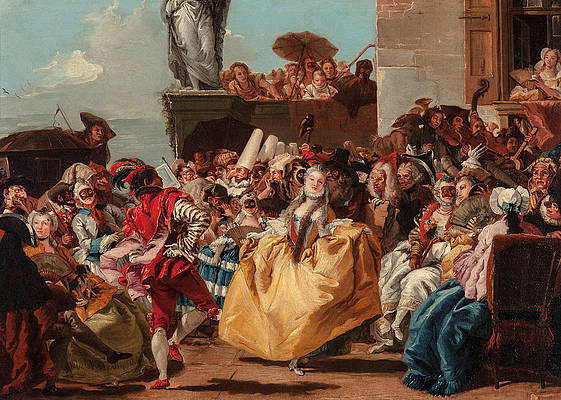
The costumes for these pageants depicted Gods, Mythological characters, animals and emotions of hope and joy. Designers wanted to captivate and charm the audience, giving rise to Italian Designers like Leonardo Da Vinci who led the way with such lavish pageants. However in England, during the Elizabethan times, the Elizabethan Theater (also known as the English Renaissance Theater) consisted of plays with the likes of William Shakespeare and saw those portraying men wearing their own clothing but adding embellishments, and teenage boys playing the role of women. The men’s costume included a shirt, stockings and a corset topped with extra layers. The lower garment layer included breeches or slops which are a nicker like pant ending below the knee or trunk hose which are very full shorts. Over the shirt they wore a doublet – a tight fitting coat or jerkin which can be a sleeveless vest or an overcoat. Also a stiff high collar of ruffled fabric worn with a river which is a triangular fabric below the neck or ruff. The boys on the other hand who played women wore undergarments, corsets, gowns, ruffs, hats and shoes. The gowns were full and elaborate so they used boning to hold them stiff with hooped or padded underskirts called fatheringdales and decorative foreparts at the splits of the skirt, plus bolsters or (bum rolls) on their hips to support the weight of the skirt. These boys were placed on diets with exercise programs to keep their weight slim like feminine figures.


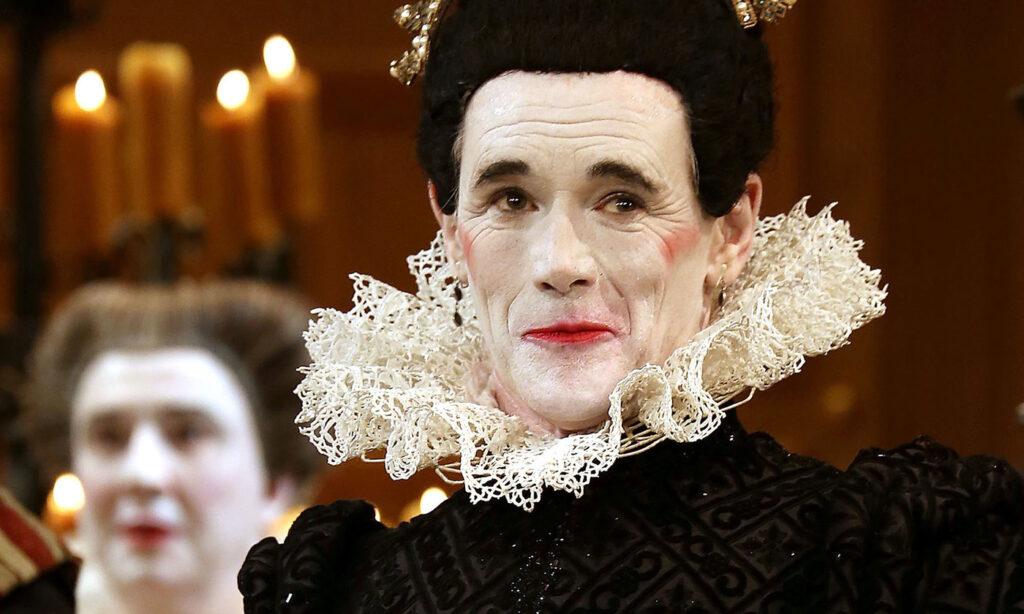
Baroquism
Baroque art which originated in Italy was embraced by other countries wanting to move away from Roman Catholic church artwork, that was considered widely emotional. Baroque theatre originated in the 17th Century by an Italian designer called Giacomo Torelli. He came from Venice to join royal courts of French Kings Louis XIII and Louis XIV describing the arts dramatic, bizarre with over decorated characteristics. Under the rule of Louis XIV decorative exhurberance replaced rigid militaristic clothing as the Baroque costume for men – which re-styled coats, waistcoats and baggy breeches with more relaxed flamboyant accessories using ribbons in doublets and ruffled long shirt sleeves – that remained unchanged during this time.
The close of the thirty years war and the restoration of King Charles II brought an end to this military style clothing for men, and when France gained supremacy in Europe, the court in Versailles would dictate the fashion styles which were prevelant in Europe till the 18th century. Louis XIV himself was a court ballet dancer who performed in a play called La Ballet de la Nuit in 1653, dubbed the Sun King, and with his personal Ballet Master Pierre Beauchamp, choreographed many dancers at Versailles was later credited for organising Ballet as a way of movement. Louis’ legacy included the Academie of D’ Opera, that paved the way for Ballet as a profession.

The Baroque era ushered in a period of lavish but often outlandish clothing for both men and women alike, with Periwigs worn by royals, but also worn by men in higher society not only as a fashion statement, but to cover up unsightly patches or hair loss. Fashion transitioned into long lean lines for men and women with lower waists, a change from the high waisted silhouettes. But when the hoop skirt was banished for women due to it’s impracticality, it was replaced with a padded underskirt made of many layers of fine fabric giving a softer silhouette. The bodice was then supported by boning making the corset unnecessary until later in the century when French noblewomen claimed this to be an essential part of feminine beauty, but worn as a separate item of clothing. The main styles were puffy skirts, loose shoulders with wide sleeves in either Virago or Paned styles with exposed necklines and the preferred fabrics were heavy gold or silver brocades with silk for nobility. Women still wore the popular ruff collar till 1630 until the cape like Vandyke collar replaced it with hair worn upwards secured with ribbons. After the French revolution and other proceeding wars Ballet was profoundly altered, bringing significant change to Baroque dance where costume styles for women changed with them favouring light loose fitting garments that allowed a range of movement, and with the introduction of soft slipper-like footwear made for performing pirouettes, high leaps with new discovered tricks such as posing en pointe. Find more info on Historical costumes depicting Baroque style dressing including accessories – at this location.
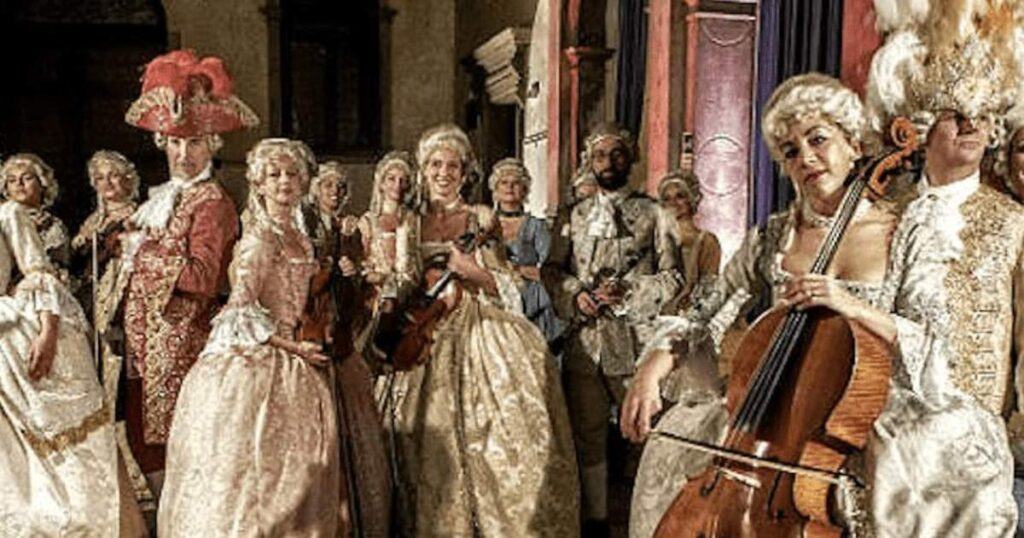


Burlesque was born
Aristophanes was the father who envisaged Burlesque in the 5th Century BC in Athens. He was a playright, poet and performer who penned a story about Lisistrata who forged a clever way to end the Peloponnesian War by recruiting wives of soldiers on both sides, while they were held up in the Acropolis, to end battles or there will be no sex till there’s peace. This set the stage for centuries of blue comedy or satirical plays, which became the beginning of Burlesque.

Burlesque theater started in London during the Victorian era from the 1830’s to the 1890’s. Burlesque was a word used in the 17th Century and derived from the Italian word Burlesco. Burla means making a joke or a mockery of someone mimicking their character in a musical composition or dance using examples from Opera or Shakespeare, whilst rewriting original music for comical effect. Many venues in London were known for showing Burlesque during this era. Burlesque was used to describe pastiche and parody in the 17th and 18th century, but such shows were referred to as extravaganza and perversion. The Burlesque shows were performed as one of three acts till the 1870’s when they became the main event till the 1890’s where popularity faded and were replaced by wholesome entertainment, such as the London Vaudeville performances.

Vaudeville emerges
In America during the mid 1800’s, variety entertainment became popular among the frontier settlements and urban centers, and with the influx of migrants, these urban populations grew, hence Vaudeville emerges – to become a central point for American culture life. Vaudeville was a combination of centuries old American cultural traditions like The English Music Hall, Minstrels and Yiddish theatre.
In 1881 a ballad and minstrel singer called Tony Pastor created a variety show for families in particular, thus leading the way for others recognizing this style of entertainment as a profitable way of reaching a wider audience. The shows were hilariously funny and included acts by comedians, singers, dancers, ventriloquists, acrobats and animal trainers. Vaudeville brought different cultures and races together, as well as classes of people. The performers became famous for their signature acts and continued to delight audiences for many decades till the movie industry started in the 1940’s where they performed to smaller crowds during intermission. Many vaudevillians went on to become movie and then TV stars. You may find some vaudeville costumes on this site.


*As an Affiliate - I may earn a commission if you click the link and make a purchase*
Meanwhile in 1868 a performing dance troupe in London called the British Blondes, wearing flesh coloured tights and bleached hair, gave an impression of naked legs, scandalising but thrilling Britons, while still selling heaps of tickets. And when they visited New York, the city was ready and couldn’t get enough of this all female cast, who’s main focus was to humourously exaggerate or imitate an artist or writer. Their first successful show was a production called Ixion, a mythological spoof which portrayed under-dressed women in patriach roles, and as sexual aggressors, which pushed boundaries with the audience, causing an outrage for some. However that did not deter the popularity of Burlesque which became huge and grossed hundreds of thousands in it’s first season for Lydia Thompson.

These all female shows were considered scandalous, showing their legs in flesh colored tights with extravagant lingerie was quite risque for this era, but this did not deter patrons who demanded more. They introduced Minstrel shows by adding such elements as low comedians and sketches using black performers and male acts as singers, magicians and acrobats, but still included a chorus number or English style of humour. Many different shows came into play on stage producing Burlesque stars such as Mabel Saintley who was the first American born to star to become acclaimed in Mme Rintzels Female Minstrels. Other shows such as Oriental America produced stars like Ada Overton Walker, Stella Wiley, Dora Dean and Belle Davis, who were famous for their social commentary on stage of America and abroad. Burlesque flourished for the rest of that century developing into an all nights entertainment with chorus girls, comedy routines including song and dance.



Whilst the French took to Burlesque at their cabaret venue Folies Bergere Paris which opened in 1869 and became one the most influential in burlesque history. It was famous for nearly nude performers, revelry and developing a unique music hall style like with the opening of the Moulin Rouge as the Jardin de Paris in October 1889 at the foot of the Montmartre Hill. The setting was extravagant and the garden style outdoor cafe area allowed for a mix of people from all walks of life to rub shoulders with foreigners who nick named it the First Palace of Women. The auditorium was designed in a way to allow for changes in decor and where people could dance and mix while being entertained by a variety of music acts. The early years of the Moulin Rouge were marked by extravagant shows inspired by the circus, while the Can Can dance was inspired by the quadrille and was a popular dance in the chorus line. The performers danced furiously in dark tights and seductive costumes. Here are some Moulin Rouge memorabilia you can buy to collect.

The corset which dated back to the mid 16th century, was their main costume. This item was worn to highlight and enhance the female form and for those looking to accentuate sexy curves on stage, making this style of costume quite distant from what the Edwardian dress costume consisted of. The best dancers would mix with royalty, artists and writers and one of the biggest showgirls of the time was a cortisan called Minstinguette, a career and society girl who was also romantically linked to Alphonso XIII the King of Spain and Russian Prince Orloff. They said she was a model of beauty with mysterious feminine power. Burlesque continued to forge throughout the Titanic Era, and in the 1920’s when hemlines were rising and during this prohibition era, theatre owner Billy Minsky encompassed the start of burlesque in New York. Business boomed so he opened two more theatres with the help of his brother Herbert. He had his sights on Broadway and enlisted one of their biggest acts Gypsy Rose Lee who became the biggest sensation that Burlesque had ever seen. Competition was fierce in the burlesque world during the 1930’s and strippers would command huge salaries for their strip tease performances.



Minskyville, as it was known, soon came to a crashing halt when the founder died from Paget’s disease at 41. burlesque slowly diminished as resentment grew, within Politicians, Broadway producers, real estate owners and the Catholic church where they stood united in opposition. At the end of the 2nd World War and during the heyday of Pin Ups, this era brought back the art of Burlesque. Folks that celebrated Americana included the new look burlesque dancers with acts becoming influenced by movie starlets in 1940’s costume. The look of the era was voluptuous and curvy, with a return of the corset for all burlesquers, with exaggerated figures and personalities. Skits, stunts and big props were used to outdo each other on stage, as every girl had their own signature. By the 1970’s burlesque had all but faded. It was reprised in the mid 1990’s but the most famous venue is still the Moulin Rouge. There were a few modern day movies made on Burlesque, but had different titles. My favourite version was called Burlesque starring Christina Aguilera and Cher. Take a look at some of the lovely embellished pieces you can purchase online. Burlesque or costume pieces can also be found here. Various other styles and sizes can be purchased through this site.



Hoochie Coochie
In the 20th century burlesque slowly transformed into striptease acts with more elaborate costumes. During the late 1800’s a stage name of Little Egypt was the name given to three popular exotic belly dancers who became famous in the 1900’s. Three women were given this name for their separate performances of exotic, shimmy and gyrating belly dancing at various times. Farida Masa Spryroupoulos, Ashea Wabe and Fatima Djemille all contributed to the nick name Little Egypt, but later there were cases where Middle Eastern and American women tried to imitate them with their varying skills throughout the years also adopting the name “little egypt”, but they still held their name for being the most famous. In 1896 belly dancer, Fatima became famous for her Coochie Coochie dance (in the girlie shows) debuting at the first Chicago World’s Fair showcasing Amusements and Exhibitions. For those interested in this bygone era hobby, belly dancing classes are still trending today at specialized dance schools, and costumes can be bought online.

Men flocked to the “Midway Plaisance” to see the main event called “A Street in Cairo” where creative dancers performed in Side Shows that fascinated and scandalized Victorians . The dance was later renamed the Hoochie Coochie dance. Their costumes consisted of short sleeveless vests fastened low on the bust revealing cleavage, this was teamed with a short flowing split skirt worn on the hips revealing a midriff and heavily adorned jewellery, beads and finger cymbals. Belly dancing was originally called Raq Sharqi and the folklore was likened to Egyptian Ghawazee’s or Gypsy prostitutes, where they danced for compensation. After the World Fair ended, similar performances were held all over the United States despite the efforts of local “vice hunters” trying to stop them. Belly dancing or Hoochie Coochie eventually became an accepted part of American art and entertainment. It was later renamed Striptease.
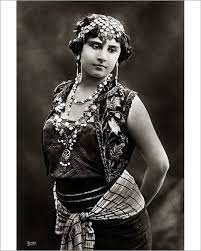
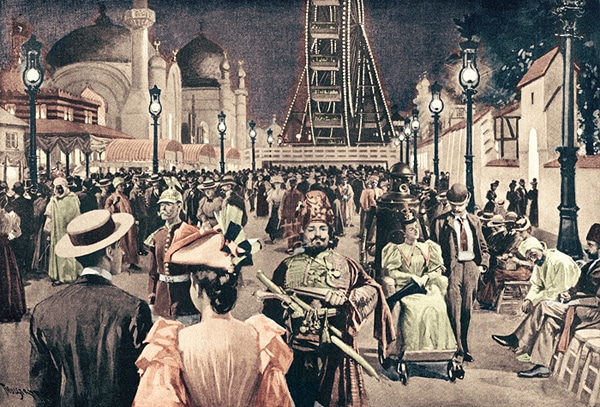

This concludes my lengthy post on costume dress ups, it doesn’t matter what genre you follow, or what excites you most in this amazing and wonderous world of costumes (at our disposal), as long as you enjoy the creativeness of experimenting with different styles, various looks and above all else enjoy the excitement this practice has to offer. Wishing you all the best of luck in the search for your dream dress-up.
I hope you all enjoyed this history of ancient and vintage costumes, feel free to add a comment below.
Many thanks,
Helen
Connect with us via our socials or get in touch below:
https://www.facebook.com/vintageclothesandaccessorydesigns
https://www.instagram.com/vintageclothesandaccessories
